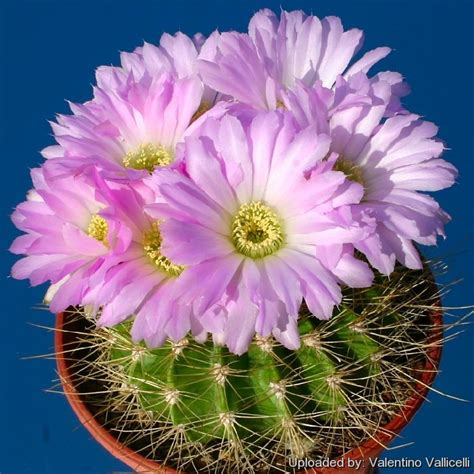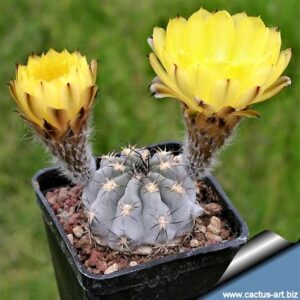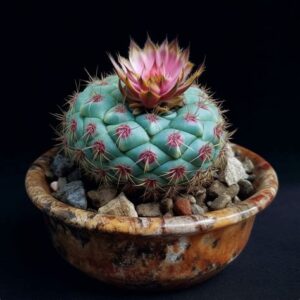When discussing the rich diversity of cacti, one cannot bypass the enchanting Acanthocalycium violaceum, commonly referred to as the Violet Flowering Mountain Cactus. Known for its strikingly beautiful blooms, this species is considered a staple among enthusiasts and collectors alike. Hailing from the arid regions of South America, particularly Argentina, this cactus species embodies both aesthetic beauty and resilient survival. Beyond its allure, multiple varieties of Acanthocalycium violaceum exist, each with unique characteristics that captivate avid gardeners and collectors. Here, we will explore the fascinating varieties of Acanthocalycium violaceum that you need to know about, enriching your understanding and appreciation of this remarkable genus.
Unveiling the Distinct Varieties of Acanthocalycium Violaceum
The world of Acanthocalycium violaceum presents several intriguing varieties, each possessing its own distinct traits while remaining true to the overarching species characteristics. A notable aspect of this genus is its adaptability to diverse environmental conditions, allowing for a broad range of visual and morphological differences. Here, we’ll delve deeper into some of the most prominent varieties of Acanthocalycium violaceum.
Acanthocalycium violaceum var. violaceum
The quintessential variety, Acanthocalycium violaceum var. violaceum, is celebrated for its rich purple flowers that bloom in the spring. The body of this cactus is typically globular, featuring prominent ribs and long, slender spines that give it an intricate appearance. This variety thrives in well-draining soil, ideally with a mixture of sandy and clay components to facilitate robust growth. Its vibrant blooms can sometimes reach up to 8 centimeters in diameter, creating an eye-catching spectacle against the lush green of the cactus body.
Growing conditions significantly affect the vibrancy of its blossoms. When cultivated in full sun, the flowers tend to exhibit a deeper hue. Hence, placement in a sunny location is paramount for optimal blooming, making this variety a desired addition to any succulent collection.
Acanthocalycium violaceum var. pachycephalum
Acanthocalycium violaceum var. pachycephalum distinguishes itself through its more compact growth habit, typically exhibiting a shorter, squat appearance. Often found in rocky terrains of its native habitat, this variety displays a fascinating adaptation to survival in harsh conditions. Characterized by its thickened skin, the pachycephalum variety showcases muted green tones that contrast beautifully with its brilliant violet flowers.
This variety’s resilient nature allows it to withstand extreme temperatures, making it a commendable candidate for cultivation in less-than-ideal gardening situations. When adequately cared for, this variety produces delightful blooms that can cover the entire surface of the cactus during the flowering season, resulting in a spectacular floral display.
Acanthocalycium violaceum var. splendens
One of the crown jewels in the Acanthocalycium violaceum list is the var. splendens variety. As its name suggests, this variety is heralded for its radiant and lavish flower clusters. The splendens variety typically has a taller stature and an impressive number of ribs, which provide both visual and structural interest. The flowers, usually larger than its counterpart varieties, display an awe-inspiring mix of lavender, purple, and even pink hues.
Due to its striking appearance, Acanthocalycium violaceum var. splendens is often used in landscape designs aimed at creating vivid color palettes. Additionally, it performs well in pots and can be displayed both indoors and outdoors, given suitable lighting conditions. Its flowering occurs later in the season, extending the bloom time for gardeners who appreciate prolonged aesthetics in their collections.
Acanthocalycium Violaceum Varieties and Their Cultivation
As we delve deeper into the cultivation of Acanthocalycium violaceum varieties, it is imperative to understand their basic care requirements.
Optimal Growing Conditions
All Acanthocalycium violaceum varieties demonstrate a preference for bright sunlight. When cultivating them indoors, placing them near south or west-facing windows is advisable to ensure they receive adequate light. If grown outdoors, a location that receives at least six hours of direct sunlight daily is ideal.
Soil preferences lean towards a sandy, well-draining mix. A common approach is to use a combination of potting soil, coarse sand, and perlite to achieve an optimal mixture. The goal here is to facilitate drainage and prevent waterlogging, which can lead to root rot. Jarring these cacti from water retention allows them to thrive and develop robust root systems.
Watering Practices
Watering is another pivotal aspect of Acanthocalycium violaceum care. During the growing season in spring and summer, watering should be more frequent, typically every two weeks, allowing the soil to dry out completely between sessions. However, in the dormant months of autumn and winter, a marked reduction in watering is necessary, sometimes limiting it to monthly intervals to prevent over-saturation. This cyclical practice mimics their native environment, thereby promoting healthy growth.
Propagation Techniques
Propagation for Acanthocalycium violaceum can be achieved through seed sowing or offsets. Seeds should be sown in a light, well-draining soil mix, with humidity levels maintained to foster germination. Offsets, or “pups,” can be carefully removed from the parent plant and replanted once they are at least a few centimeters in diameter. Both methods offer effective means to expand one’s collection, whether for personal enjoyment or commercial undertakings.
Common Pests and Diseases
Despite their resilient nature, Acanthocalycium violaceum varieties are not invincible. The most frequent afflictions include mealybugs and spider mites. Regularly inspecting the plants for pest activity and employing organic pesticides or neem oil can help prevent infestations. Moreover, ensuring adequate air circulation around the plants can deter fungal issues, which sometimes arise in overly humid conditions.
Conclusion: Acanthocalycium violaceum in Your Collection
Acanthocalycium violaceum offers a plethora of varieties that enhance any collector’s repertoire. With the right growing conditions, care practices, and attention to details, these cacti can thrive and bring beauty and vibrance to any space. Understanding each variety’s uniqueness, such as the classic violaceum, the compact pachycephalum, and the luxurious splendens, can enrich one’s appreciation for this captivating genus and ensure successful cultivation. Whether planted in pots, displayed in gardens, or showcased in specialized collection exhibits, Acanthocalycium violaceum varieties are sure to impress while demonstrating the stunning versatility of cacti in general.





Leave a Comment